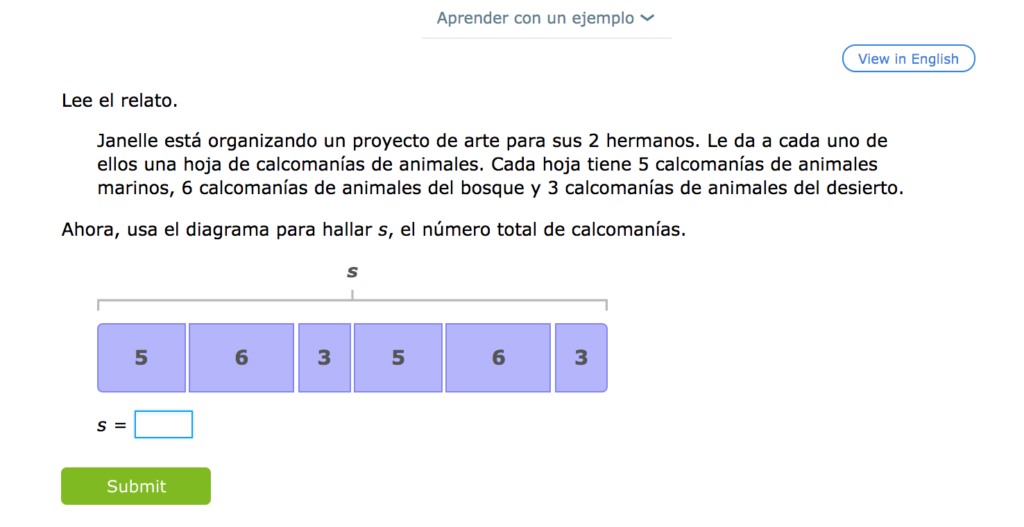How many diverse languages do the students in your class speak? The population of English language learners (ELLs) has been steadily increasing, so chances are you’ve had at least one ELL student in your class. In fact, according to the most recent data from the U.S. Department of Education, an estimated 10 percent of students in public schools are ELLs. Of that, more than 75 percent are Spanish speakers.
ELL students face the two-fold challenge of learning not only the academic content of their classes, but also adjusting to the language of instruction. Here are some general strategies and IXL tips to help you better support your ELL students.
1. Encourage bilingualism
Though ELLs often acquire conversational English relatively quickly, it’s a much slower journey for academic English. In fact, it’s estimated that ELL students need between four and seven years to reach proficiency in academic English.
However, forcing ELLs to speak only English at school or home doesn’t speed up this process. Research demonstrates that by developing their native language, ELLs are better able to transfer concepts from their first language to speed up their acquisition of English. So if your ELL student isn’t able to answer a written task in English, have them answer in their native language instead. Even if you can’t understand their response, it allows them to participate while practicing valuable academic skills.
2. Value linguistic diversity
While you’ll never learn all 6,000 of the world’s languages, you can learn and pronounce your students’ names correctly—it will make them feel respected and valued. Likewise, put in the effort to research their home countries, cultures, and languages. By thinking of cultural and linguistic differences as resources and learning opportunities rather than obstacles, you’ll create a welcoming environment where your ELLs won’t worry about making mistakes as they develop their English skills.

3. Deliver targeted, accessible instruction
ELL students need to be immersed in the English language, but without scaffolding, ELLs are more likely to sink than swim. Luckily, even just some minor adjustments to your language and speech patterns will help your students. Speak slowly, use shorter sentences, and model the academic language you want learners to use.
And thanks to IXL’s carefully scaffolded curriculum, it’s easy to meet ELL students where they are. Each IXL skill automatically adapts in difficulty, helping ELLs build understanding at their own pace. Learners also have access to IXL’s complete pre-K to 12th-grade curriculum, so they can remediate in lower grade levels whenever needed.
4. Leverage audio support tools
It can be challenging for ELL students to learn new topics while simultaneously developing their English language skills. To help students overcome the language barrier, IXL’s built-in audio support reads aloud the questions presented to learners. This ensures that ELLs can practice and learn while having the language support they need whenever they need it.
IXL not only reads aloud text for skills in math, language arts, and science, but answer explanations too! If a student answers a math problem incorrectly, IXL provides the correct answer with a step-by-step audio explanation.
For your Spanish-speaking learners, IXL offers Spanish support for math skills to help them make progress in essential math concepts. When Spanish support is enabled, students can toggle between viewing and hearing the questions in English or Spanish. This encourages learners to tackle problems in English first and use the translations when needed.


5. Understand where learners are struggling
Are ELL students struggling because they don’t understand the language or because they don’t understand the skill? It’s important to identify the root issue so that it can be addressed effectively.
IXL Analytics gives educators a deep understanding of their ELL students’ needs and actionable next steps to help them achieve more. With the Trouble Spots report, you can see the exact questions a learner has missed, allowing you to uncover individual areas of struggle for review and reteaching. The Questions Log report helps you figure out why a student might be stuck on a specific concept so you can provide targeted one-on-one remediation.
6. Create groups with purpose
Regardless of students’ English skills, purposeful pairing helps them get the most out of small–group instruction. Give your ELLs chances to practice their language skills with peers of varying English proficiency. Working together allows ELLs to support each other while English-proficient students can model language and provide personalized feedback.
And don’t forget to create opportunities for collaboration between speakers of the same language! If you pair ELLs with bilingual students, they’ll have a chance to clarify questions about the lesson in their native language.
Don’t have access to IXL yet? Get started with a free 30-day classroom trial.
